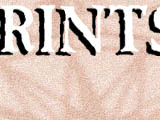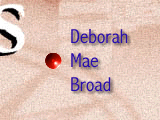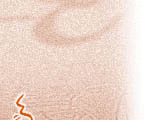 |
 |
 |
 |
 |
 |
 |
 |
 |
 |
 |
 |
 |
 |
 |
 |
Print Exhibition / February 26th - March 31th
A short introduction First of all, we thank you for your presence in this "working with the prints" exhibition. This is a group exhibition of several printmakers who were once had a solo or a group exhibition in our gallery. Conducting a big event where we can present fine works of highly competence artists is one of our obsessions. Whether they are from Indonesia or overseas is not the issue. Sooner or later we are sure that there will be Indonesian printmakers who will be able to obtain equal competencies and comparable fine quality works. Our main consideration is to show the value and the quality of the works that were achieved based on of technical ability and professionally handled process. Technical ability in printmaking is a basic requirement that is needed to be mastered by anyone who wishes to claim oneself as a printmaker. Though a new tradition - of handing a plate to be printed by an artist's partner while artist's involvement is still dominate the whole process - has been born, it could not be set as an excuse for one to become a printmaker and not having the requred technical knowledge. The printmakers invited in this exhibition have one similarity. Historically, it is called Originality. They all have this originality in their works. That is a term derived from an artist's complete involvement in the making of an artwork. They all manually worked on their prints themselves, from the concept to the final visual form. Each of them has a specific technical and medium preference as a result of their specific interest, visual character suitability or a proper working process that corresponds with their temperament. Why they choose print as a media of their expression is rather difficult to explain. It is not about edition. Edition in printmaking is a positive consequence. The possibility of one work to be enjoyed, appreciated, exhibited even owned by more than one individuals at the same time. It is more about obtaining a feeling of satisfaction when they are able to convey their ideas through certain media and technique that excite them, and when they are able to handle the problems, limitation, or barriers on the process. A quotation from Peter Gabordi might represents the feeling or the reason nearly all-professional printmakers have. Peter Gabordi is an artist; painter, printmaker, teacher and writer. "I make prints because in using the metal, the wood and all other materials available, I can express things that I cannot express by any other means. In other words, I am interesting in Printmaking not as a means of reproduction, but as an original, creative medium. Even if I could pull only one print from each of my plates, I would still make them". Thank You, Ine - RedPoint |
Deborah Mae Broad (USA) Intaglio & wood engraving Prof. Deborah Mae Broad is living in a big farm, in the middle of American Midwest vast corn & wheat fields. It is a very special place where she spent the whole of her adult life along with her three horses, one dog, two box of turtles, twenty cats, sheep and chickens... Surrounded by a working farm all sides, facing across great vastness at the corn and wheat that grows in seemingly uncountable waves of bounty, it is clear that any understanding of her work begins with an understanding of this land and her relationship to it. There is a physicality to Broad's work that mirrors farm life, contradictions and all. A translation of her personal vision about her homestead into subject and working method. With no less care than a farmer would prepare their field, she runs her paper through a press against a selection of altering textures, cutting furrows and making a fertile ground for her imagination to grow. One can see it in her poignant, knowing renderings of the animals that she puts to work, albeit metaphorically, in her drawings, etchings and wood engravings. (Deven Golden, Director of Steibel Modern Gallery, New York) Most of her works in this exhibition are etching - aquatint and wood engraving, created with an excellent touch of sensitivity toward figures and a complete understanding about the medium. The way she works on details shows an intensity of her working method. A serious and delicate work but does not mean that it has to be stiff. As we can see for example in "The Argument", it has a slight sense of humour in it. A satire expression of a social phenomenon of this real world. A silent debate between two horses, facing each other, each with monkey sitting on its back, and armed with a concave rubber. Never ending disagreement with no intention to solve which often found in human relation ship depicted in a humorous analogy. Or in "Aint What She Used To Be", a satire expression of human's unnatural behaviour. Never satisfied with their natural strong points. It is true that her art is the product of a quiet, personal vision. But more than that, it is a warm-blooded vision. Gently, irresistibly, it draws us into sharing its pure joy in discovering its own identity and, at the end, the discovery of our own as well. (Deven Golden, Director of Steibel Modern Gallery, New York) Keith Howard (Canada) Photo-etching Keith Howard is the head of the Canadian School for Non-toxic Printmaking (CNSP) which is the leading institution in the world for research and education in the field of Non-toxic Printmaking. He is also the originator of Non-toxic Intaglio and author of "Safe Photo Etching for Photographers and Artists" and "Non-toxic Intaglio Printmaking". Howard's non-toxic intaglio techniques have revolutionised the art of intaglio in many universities or colleges and professional print shops around the world. Howard's works in this exhibition are the products of his photo-etching research. Prints made of a polymer emulsion film he developed, which is also known as 'ImageOn'. An innovation in the world of etching that enables printmakers to work with or without acid and to work with much safer and nature friendly materials. A series of works with an atmosphere of English Garden utilised photo-etching and a method of multi-coloured process in one plate, a process usually called as a-la poupee. The main characteristic of his works is dominated by photography and photo-etching method. While photography is usually seen as one different approach of art, his works show his ability to create a new alternative. A combination between a photographic and printmaking technique, which enables him to make further experiments with colours and moreover with a touch of direct hand scratches. In his hands printmaking seems to be very simple and easy. Far from its genuine image; hard work, long and difficult process or unusual materials. Innovation or reformation is perhaps the appropriate word to clarify his dedication toward the development of printmaking techniques. Manuel Lau (Peru) Lithography Not many printmakers in Indonesia are familiar with Lithography, because it requires certain facilities and uncommon materials which are not very easy to be found. This planographic medium utilised on a grained stone has become an exploration medium for Manuel Lau for years. Manuel is a young printmaker from Vancouver, Canada who is also a member of Malaspina Printmaker Society. Born in Peru, he is strongly influenced by Greek's long tradition of mythology and symbolism. In one occasion in Malaspina when he was printing his works, he explained that he is using this word; Munchi-Moche - as a theme of his solo exhibition in Canada - which does not actually have any meaning, but not in the sense of meaningless. It is a word-play represents an identity symbol which for Manuel himself represents his concept, ideas and thoughts. Most of Manuel's works are dominated by figures; horse riders, goats and bats, Pegasus, a Greek's flying mythological horse. He also creates new creatures, such as a metamorphosis of horse and bat, as seen in "Batihorse". For him creating art is a game of words and shapes from his fantasy. That is why the figures he created is rather an abstraction, consist of symbols of his thoughts. Arranged in strong and attractive colours that bring out a more playful sense of his art. Some elements apparently which have significant meaning are repeated in some different form as a confirmation. For instance in "Dos Chinos", he depicts typical Chinese elements and put Chinese words, to emphasised the focus of his work. In approaching the content of his works, it is perhaps helpful also to understand his multicultural background. Born and grew up in Peru, his parents is a Hong Kong migrant. He then moved to Canada himself. It might be a complex world, but for Manuel it is a bless, added to the richness of his life. His art is about human existence; his own, with history, identity, cultural influences and journey of life blended together, expressed through his artistic and technical ability. His technical competency in producing high quality prints is also one of his outstanding ability. Those who understand the process of lithography, perhaps could have a much better understanding about the power and the excellency of his works. Kurt Mair (Germany) Intaglio Kurt started to learn art at Lorrach, Pedagogy High School. He then entered Albert Ludwig University, majoring Art History, Archeology and Japanology. In 1987 he gained his Diploma degree in Etching and Lithography from Ecole des Arts Decoratifts, Strasbourg and worked at Edition Atelier Bucciali, a printmaking studio at Colmar, French. Finally he became a full time printmaker since 1996 up until now, with a long record of solo and group exhibition in Europe, USA and Asia, and world wide collectors. This is the third exhibition he had in Indonesia. After 2 other solo exhibitions in 1996 and 1998. Like in his first two exhibitions, and surely in many other exhibitions he had, he is showing the combination of his technical mastery and artistic ability in a form of high quality prints. Perfection! Perhaps it is the word to sum up his works. Among his objects is still-life. Simple objects depicted in an interesting composition; bright and dark, black and colour, highlight nuance, brought th object into a new dimention. Simple daily things never appeared to be just simple things when he took them in his plates. His mastery, mainly in technical term, lead him to pass over difficulties or problems that usually restrain so called freedom of expression for other artists. Working with intensity and dedication is still a part of his routine. While many other artists are occupied with "contemporary art",- a modern tendency to release every possible limitation so that changing the focus of skill and technical importance with the importance of ideas and concepts,- his persistence become a rarely found superiority. Kurt Mair is an example for many young printmakers that tradition of creating art through certain skill will always have a place of its own. That such specific knowledge and ability will serve an important achievement for any artist; identity, as also a creation with the quality acknowledgeable by universal language. Ken Pattern (Canada) Lithography "Creating visual images has always been a part of my life. I was the typical school kid bringing home the creations all parents are so proud to receive (hopefully). I took art seriously throughout my school years until I graduated from high school in 1961. For me art was right up there with rock & roll and girls..." (Pattern. Ken, Artist Profile) Before Ken Pattern was finally decide to concentrate in art, it seems like he had a long path of searching; journeys to Europe, Asia and Africa, studied sociology at University, including several jobs in the commercial world. It can be said that he started his career as a professional printmaker when he joined one of the best co-op printmaking studios in Vancouver, Malaspina Printmakers Society. It is the place where he was able to hone his skills in the craft of stone lithography and was his "home" for several years. Ken Pattern moved to Indonesia in 1989, after spent a few years in China. Had no access to printmaking facility, he continued working in other media, mostly oil painting or pen and ink drawing. Most of his works depict a view of city scene or nature without figures. That is why perhaps the impression of his works about metropolitan or city is never busy and crowded but rather calm and orderly. As a landscape artist, he has a unique point of view in seeing daily life scenes in Jakarta which is often missed from our attention; kampung street, traditional food stall or carrier, small huts stand close against each other in a corner of a street. Those are what he called as Indonesia's social heritage. Things that seem to have no or very little historical value or architectural value, but continuously changing due to the rapid development of the capital city. They did exist, but when a tall modern building or sophisticated mall took their place, no one remember what was there before. It is his mission that added to the value of his fine works. Up until now, he has created hundreds of images about the city of Jakarta, and the view of its every day life which always attract his private and public collectors. His rhythm of work nowadays is producing painting and drawing and return to Malaspina Studio for several months to work on lithography. ________________________ Rewrite by Devy, Ine, Nia - RedPoint. |